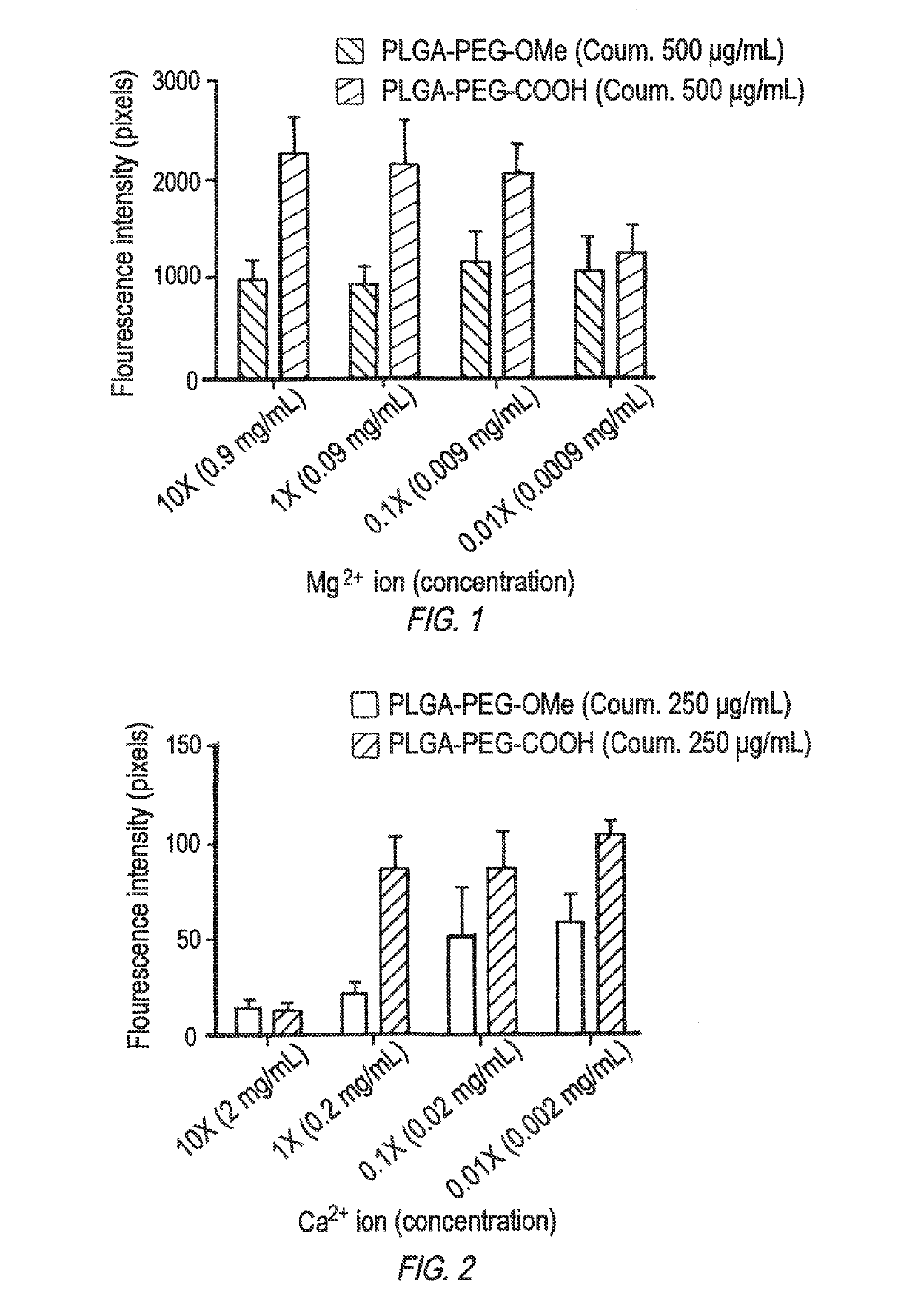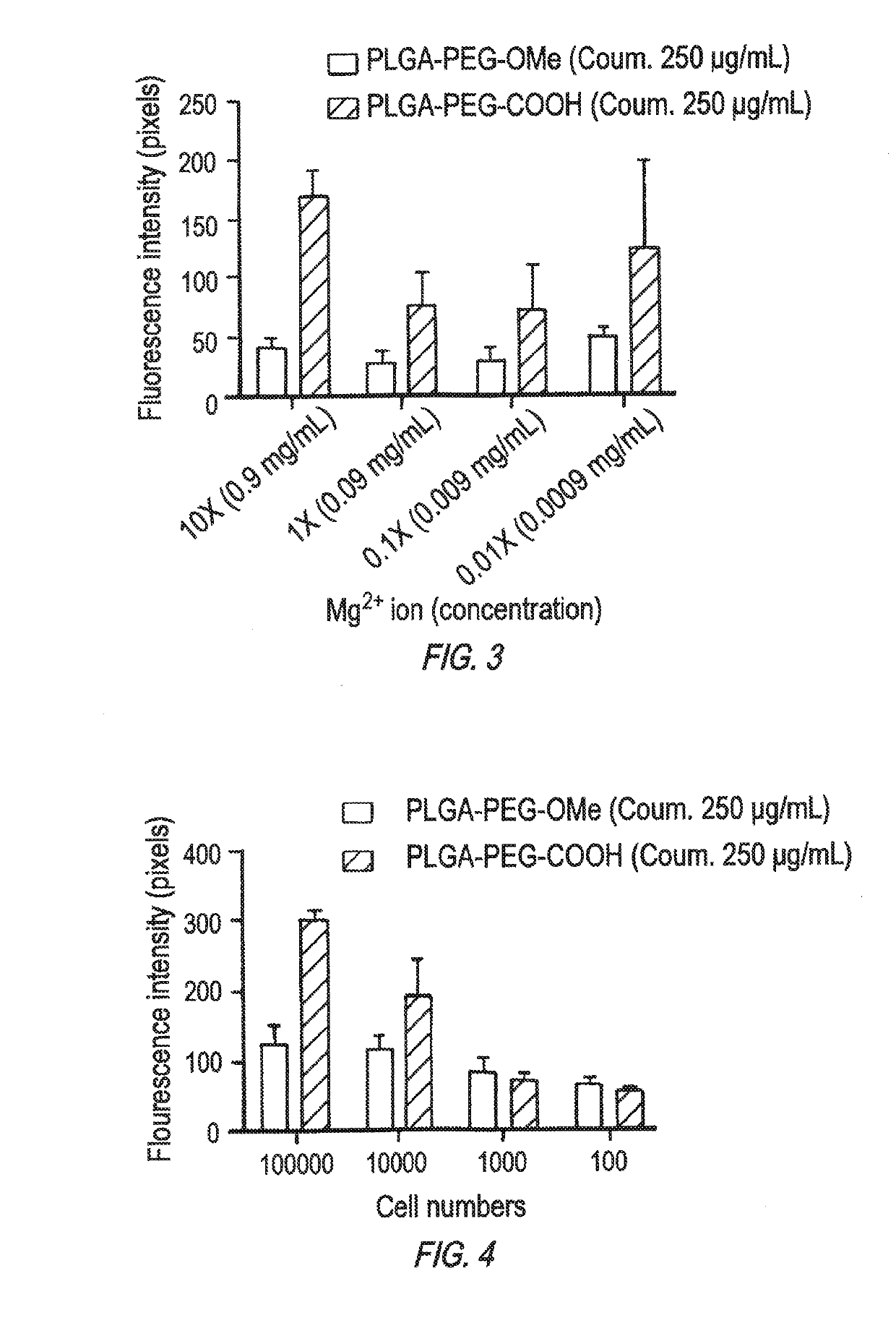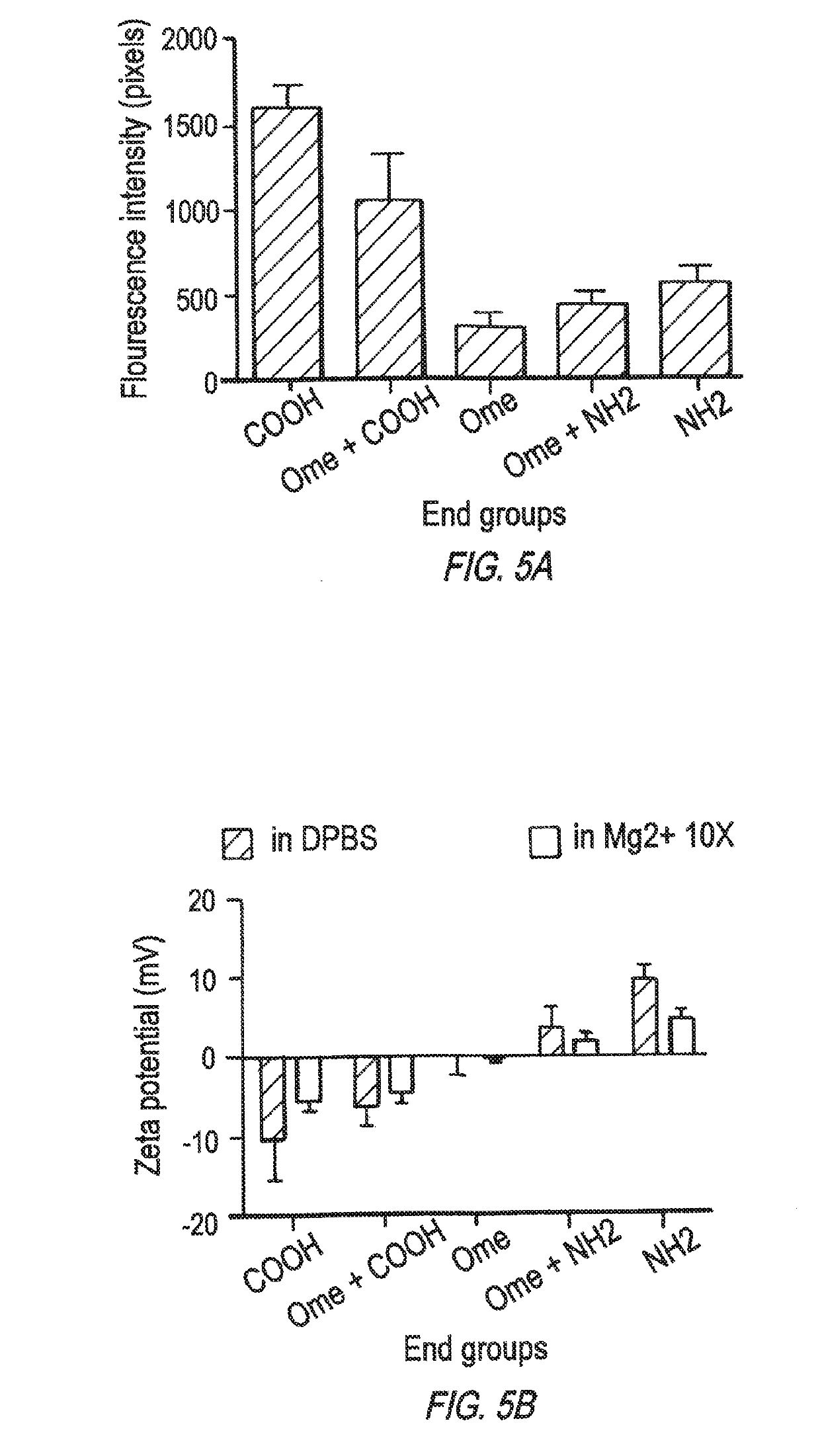Compositions for enhanced uptake by macrophages and methods of use thereof
a macrophage and composition technology, applied in the field of nanoparticulate compositions, can solve the problems that many active agents still do not reach the target location in an effective amount to improve the symptoms of sick subjects, and achieve the effects of increasing the exocytosis of the macrophage, increasing the internalization, and increasing the circulation
- Summary
- Abstract
- Description
- Claims
- Application Information
AI Technical Summary
Benefits of technology
Problems solved by technology
Method used
Image
Examples
example 1
Negatively Charged Nanoparticles are More Efficiently Taken Up by Macrophages Through Cation Mediated Complexation
[0181]Materials Methods
[0182]Nanoparticles (NP):
[0183](Size˜100-300 nm) terminated with the following:
[0184]PLGA-PEG-OMe: 5000 da-2000 da (methoxy terminated)-→Neutral
[0185]PLGA-PEG-COOH: 5000 da-2000 da (carboxy terminated)-→Negative charge
[0186]PLGA-PEG-NH2: 5000 da-2000 da (amine terminated)->Positive charge
[0187]Encapsulated Fluorescent Indicators Reporting on Particle Intracellular Trafficking:
[0188]Coumarin 6 or Rhodamine were encapsulated in NPs. Coumarin-6 does not leach out easily from particle and indeed reports on particle trafficking due to its hydrophobic equivalency to the PLGA matrix. C6, therefore, avidly associates with the polymer matrix, even during degradation.
[0189]Particle-Macrophage Incubation Medium Containing: 1× of Mg2+: Same concentration of DMEM media=0.09 mg / mL of MgSO4 1× of Ca2+: Same concentration of DMEM media=0.2 mg / mL of CaCl2
[0190]Int...
example 2
Particle Elasticity and Composition Differentially Impact Uptake
[0209]Materials and Methods
[0210]Liposomal NP and PLGA NPs are the same size (100-150 nm) and loaded with the same level fluorescein for analysis.
[0211]Results
[0212]Enhanced uptake of lipidated nanoparticles (softer) was compared to PLGA (lower elasticity) in macrophages and other phagocytic cells. Liposomal particles are generally, “softer” on the surface and “squishier” compared to PLGA nanoparticles. The results are shown in FIG. 8. FIG. 8 is a bar graph comparing macrophage internalization of PLGA nanoparticles and lapidated nanoparticles.
example 3
Targeting Can Reduce Dosage
[0213]Materials and Methods
[0214]Anti-F480 and anti-CD204 were used to exemplify the impact of addition of targeting moieties on the internalization of NP in macrophages. Incubation time=2 hours.
[0215]Results
[0216]An assay was designed to test the impact of macrophage targeting moieties on the composition. The results are illustrated in FIG. 9. FIG. 9 is a dot plot showing the effect of concentration and macrophage targeting on the internalization of nanoparticles.
[0217]The addition of an internalizing antibody has the effect of lowering the dose of NP that need to be internalized. Targeting makes no difference at higher doses. Internalizing antibodies only affect the amount of particles internalized and NOT the internalization process itself.
[0218]In another assay, cells were incubated with the nanoparticles for 30 min, thoroughly washed and incubated in fresh media for 30 min. The results are shown in Table 1:
TABLE 1Labeling EfficiencyRhodamine-labeled N...
PUM
| Property | Measurement | Unit |
|---|---|---|
| zeta potential | aaaaa | aaaaa |
| concentration | aaaaa | aaaaa |
| concentration | aaaaa | aaaaa |
Abstract
Description
Claims
Application Information
 Login to View More
Login to View More - R&D
- Intellectual Property
- Life Sciences
- Materials
- Tech Scout
- Unparalleled Data Quality
- Higher Quality Content
- 60% Fewer Hallucinations
Browse by: Latest US Patents, China's latest patents, Technical Efficacy Thesaurus, Application Domain, Technology Topic, Popular Technical Reports.
© 2025 PatSnap. All rights reserved.Legal|Privacy policy|Modern Slavery Act Transparency Statement|Sitemap|About US| Contact US: help@patsnap.com



